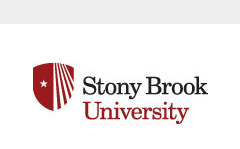Document Type
Article
Publication Date
Spring 3-16-2015
Keywords
Cell migration, Focal adhesions, Myosins, Deformation, Thin films, Cell staining, Fibroblasts, Aspect ratio
Abstract
Fibroblast migration is critical to the wound healing process. In vivo, migration occurs on fibrillar substrates, and previous observations have shown that a significant time lag exists before the onset of granulation tissue. We therefore conducted a series of experiments to understand the impact of both fibrillar morphology and migration time. Substrate topography was first shown to have a profound influence. Fibroblasts preferentially attach to fibrillar surfaces, and orient their cytoplasm for maximal contact with the fiber edge. In the case of en-mass cell migration out of an agarose droplet, fibroblasts on flat surfaces emerged with an enhanced velocity, v = 52μm/h, that decreases to the single cell value, v = 28μm/h within 24 hours and remained constant for at least four days. Fibroblasts emerging on fibrillar surfaces emerged with the single cell velocity, which remained constant for the first 24 hours and then increased reaching a plateau with more than twice the initial velocity within the next three days. The focal adhesions were distributed uniformly in cells on flat surfaces, while on the fibrillar surface they were clustered along the cell periphery. Furthermore, the number of focal adhesions for the cells on the flat surfaces remained constant, while it decreased on the fibrillar surface during the next three days. The deformation of the cell nuclei was found to be 50% larger on the fiber surfaces for the first 24 hours. While the mean deformation remained constant on the flat surface, it increased for the next three days by 24% in cells on fibers. On the fourth day, large actin/myosin fibers formed in cells on fibrillar surfaces only and coincided with a change from the standard migration mechanism involving extension of lamellipodia, and retraction of the rear, to one involving strong contractions oriented along the fibers and centered about the nucleus.
Recommended Citation
Qin, Sisi; Ricotta, Vincent; Simon, Marcia; Clark, Richard A. F.; and Rafailovich, Miriam, "Continual Cell Deformation Induced via Attachment to Oriented Fibers Enhances Fibroblast Cell Migration" (2015). Department of Biomedical Engineering Faculty Publications. 1.
https://commons.library.stonybrook.edu/dbme-articles/1
Included in
Biomedical Engineering and Bioengineering Commons, Dentistry Commons, Materials Science and Engineering Commons

Comments
Published PLoS ONE 10(3): e0119094. doi:http://dx.doi.org/10.1371/journal.pone.0119094
Data Availability: All relevant data are within the paper and its Supporting Information files.
Funding: This work was supported by the National Science Foundation (Inspire Program Award number: 1344267). The funders had no role in study design, data collection and analysis, decision to publish, or preparation of the manuscript.